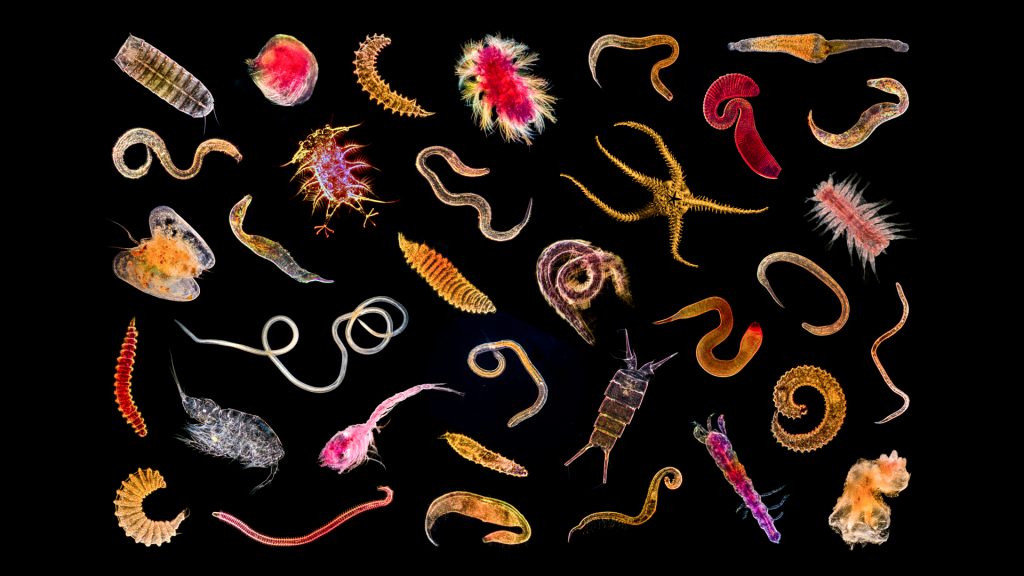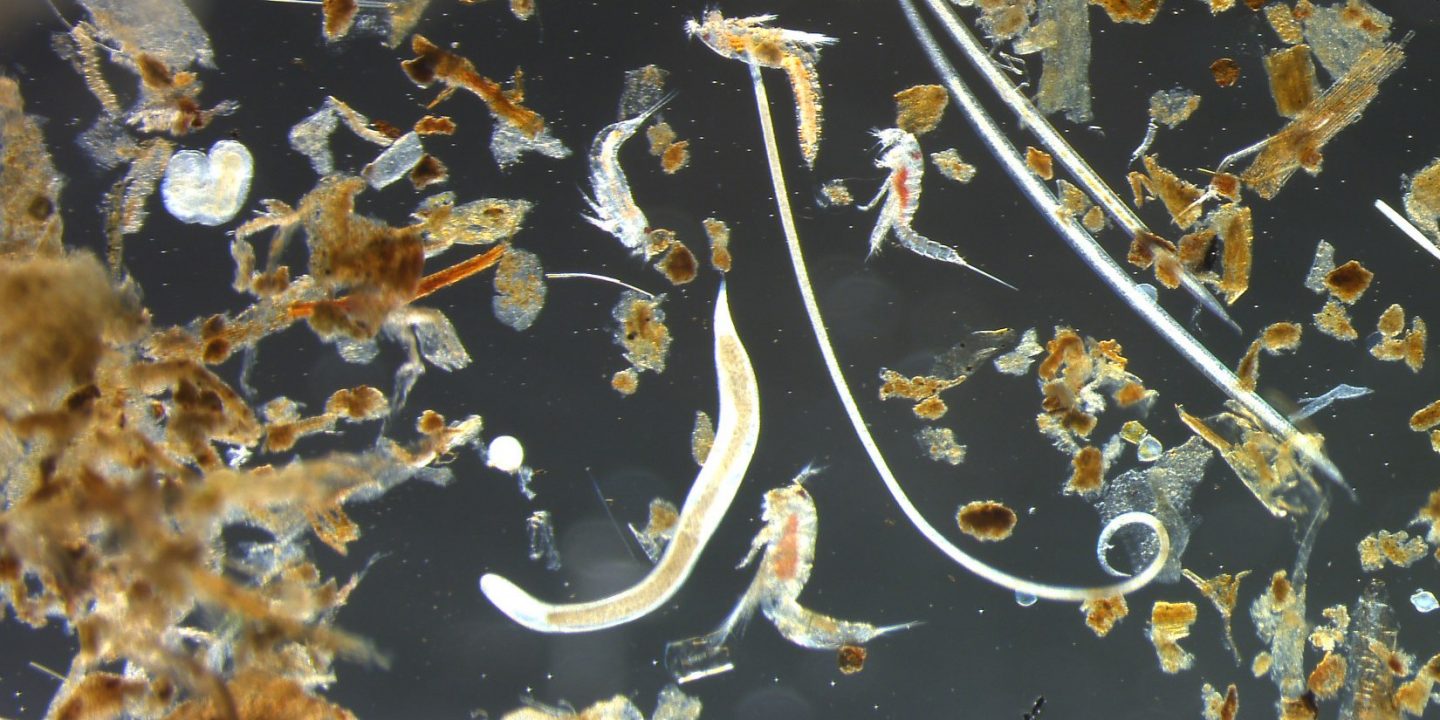Earlier this year, our group got a new Artsprosjekt funded. So, let’s dive into the world of meiofauna.
A substantial part of marine biodiversity occurs in the space between the sand grains, gravel and stones of sediments. Species that live here, also known as meiofauna, comprise a crucial link in the ecosystem between the bioproduction and consumption of microfauna and macrofauna. They are extremely diverse (Figure 1) and can be found in most animal phyla. Despite their importance, the knowledge about their taxonomy, distribution and ecology is poor and needs improvement. In Norway, in particular, meiofauna records are sparse and often only down to the phylum level.

© Gilles Martin / Ifremer
In this recently started project, funded by ArtsDatabanken, we are targeting meiofaunal and interstitial species of Gastrotricha, Gnathostomulida, Platyhelminthes and Annelida. Globally these taxa comprise about 3,700 species with only 31 species documented in Norwegian databases. Given the challenges and time-consuming processes of studying these tiny worms, we are focusing only on the Norwegian coastline of the Skagerrak, from the foot of the dunes to a depth of 50m. With morphological and molecular methods, we aim to determine species and learn more about their distribution and association with Norwegian nature types and different sediment types.

We kicked off the project this summer with fieldwork around the Oslofjord. Primary results include the first records of the phylum Gastrotricha in the area and several potentially new species for Norway that are still being identified. In the next two and a half years, we will continue with molecular work, including genome-skimming and CO1 barcoding, develop keys, determine abiotic parameters of the sediment, and review existing literature. We also plan to promote this poorly studied group to the public, by integrating meiofauna into a planned museum exhibition.
Besides Torsten Struck, the project leader, and myself (Ana) as a technical assistant, we have three other international researchers involved in it: Katrine Worsaae, from the University of Copenhagen, Christopher Laumer, from NHM London, and Alexander Kieneke from the German Center for Marine Biodiversity Research.
![]()

4 Comments on “Introducing MeioSkag: Meiofauna and interstitial fauna of four lophotrochozoan groups of the Skagerrak”